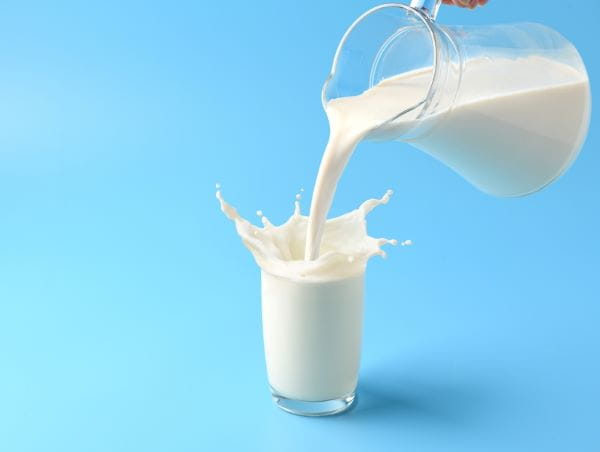If you’re lactose intolerant or just not a fan of milk, you have other options for getting the calcium you need for your bones and teeth to stay healthy. Calcium also helps with muscle function, heart health and nerve signaling, but many people don’t get enough calcium from their diet, according to Healthline, which notes that most adults’ recommended daily intake (RDI) of calcium is 1,000mg. However, women older than age 50 and adults older than age 70 need 1,200mg each day.
While milk and other dairy products like yogurt and cheese are rich in calcium, you could also find it in non-dairy items like some leafy greens and beans, seafood, tofu, dried fruit and foods fortified with calcium (such as cereals or almond milk), according to Healthline and the U.S. Department of Agriculture’s ChooseMyPlate.gov.
Here are some examples:
- Cheese: While most types of cheese are good calcium sources, parmesan cheese contains the most at 331mg per ounce. But be careful because full-fat cheese also has a lot of calories and fat, and most cheeses are high in sodium.
- Yogurt: Yogurt offers 245g of calcium in one cup, along with protein and other nutrients.
- Lentils and beans: They’re high in protein, fiber and micronutrients, and some are good sources of calcium, especially wing beans. One cup (172g) of cooked wing beans provides 24 percent of the RDI for calcium.
- Canned salmon and sardines: They have a lot of calcium because of their edible bones. Three ounces (85g) of canned salmon gives you 21 percent of the RDI for calcium, while a can of sardines provides 35 percent.
- Dried figs: One ounce (28g) of dried figs provides 5 percent of the RDI for calcium.
- Some leafy greens: Collard greens, kale and spinach offer decent amounts of calcium, but some of the leafy greens have oxalates, which hinder your body from absorbing calcium. One cup (190g) of cooked collard greens provides 25 percent of the RDI for calcium.
- Almonds: These nuts are good sources of calcium and other nutrients. One ounce, which is about 22 almonds, provides 8 percent of the RDI for calcium.
- Tofu and edamame (young soybeans): They’re both excellent sources of calcium. A half cup (126g) of tofu, when prepared with calcium, provides 86 percent of the daily intake, and one cup (155g) of edamame has 10 percent.
- Fortified foods: Some grain-based foods can be fortified with calcium, but you should carefully check the labels to know exactly how much.
Consult your health care provider about how much calcium you need and about any changes to your diet.




